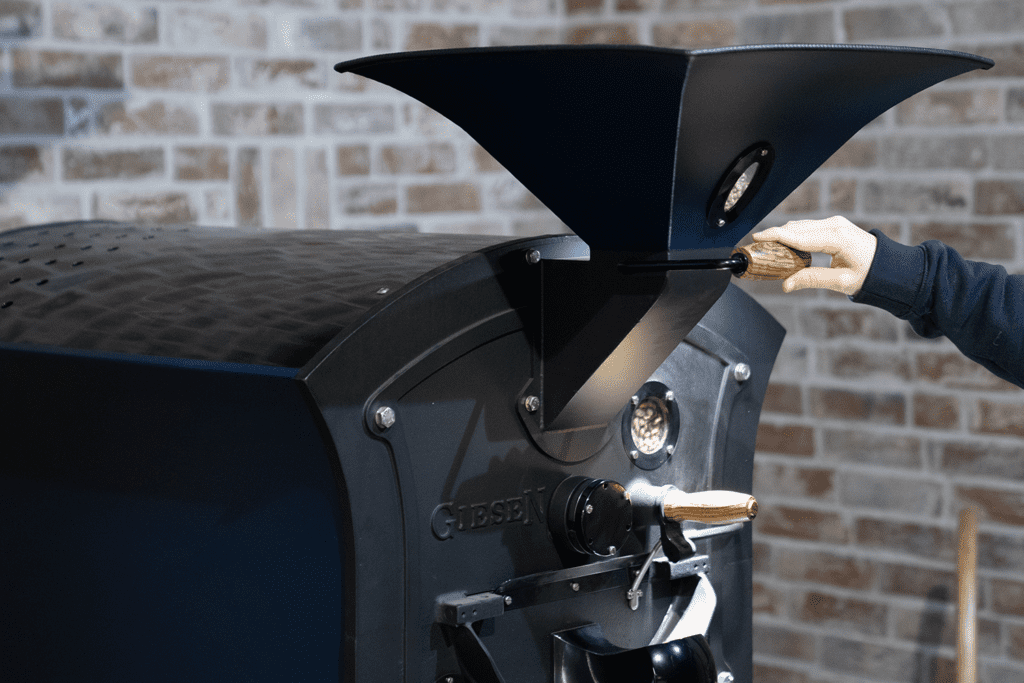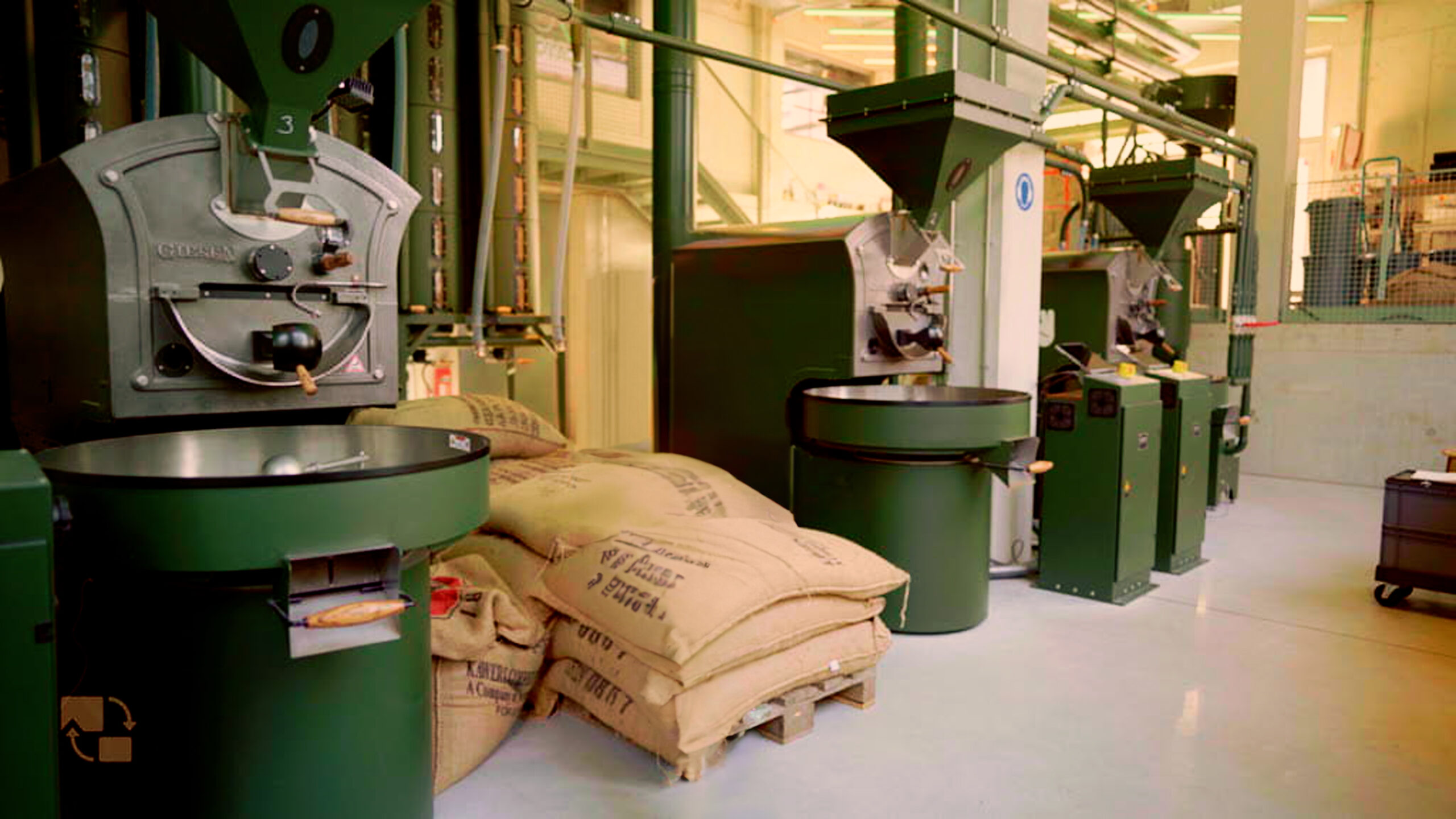Manipulating the Pa is basically the underpressure in the roasting system. That way, the roast master can accelerate or slow down the Rate of Rise (RoR) and also highlight different qualities of the flavour profile of the coffee. In this article we’re putting the Pa feature to the test by roasting 2 different coffee types. The first one is a Guatemalan Antigua washed process and the second one an Ethiopian Sidama natural process.
Creating flavour: benchmark cupping
Before the test, we performed a benchmark cupping of both coffees to identify the characteristics of these beans. We did a standard cupping roast, followed by a tasting session of both coffees. The Guatemalan Antigua revealed some age, due to the fact that the coffee was processed more than 9 months before the test. Overall flavour notes black currants, liquorice, leather, pine, plums with a mild bittersweet aftertaste.
Roasting trials
The Ethiopian Sidama displayed classical flavour notes reminiscent of this type of Ethiopian coffee: strawberry sweetness, vanilla, red grapefruit and a lingering floral aftertaste. Next, we performed 5 separate roasting trials of each coffee type. Each profile was designed to repeat a similar roasting curve and roasting time within a window of 10 to 11.5 minutes. By varying the Pa settings from 80, 120, 140 180 to 220 we were able to put this feature to the test by itself. Beside that, all other variables were unchanged.
With the Guatemalan coffee, the experiment proofed to be very successful. The flavours came out as we had hoped. After that, we tested the Pa settings of 120 and 140. This added increased perceived sweetness and less bitterness. Then we tested the lowest possible setting, 80 Pa, muted the acidity and increased the perceived bitterness. Last but not least: the highest setting, 220 Pa. This roasting produced less sweetness and the acidity was a bit harsh. The result was an astringent aftertaste.
After we tested with the Guatemalan coffee, it was time for the Ethiopian Sidama coffee. Which turned out to be the trials with inconclusive results! One panel members preferred the lowest possible setting of the Pa. Another panel member liked the highest possible setting. Another one, the third taster, preferred the 140 Pa setting. All tasters agreed that the flavour profiles were significantly different but there was no consensus about preferences.
In summary
Summarizing, I can conclude that experiments like these are extremely helpful. For example, it helps understanding the complex dynamics of roasting profile parameters and how these influence the chemistry and flavour profile of the coffee.
Willem: My previous article described the unique feature of Giesen roasters which allows the operator to increase or reduce the roasting airflow pressure or Pa setting which is integrated into the control software of basically all Giesen roasting equipment. If you are more interested in the basics of coffee roasting, you can read that here.






Cet article a 9 commentaires
Really interesting..thank you for sharing your knowledge! I have the next question:
At witch moment on the roasting process you apply/use that airflow PA value ( 80, 120,140,180,220). After 1st. crack I assume? Muchas gracias!
Hugo García
Hello Hugo, thank you for your question! For the experiments, they used a consistent air pressure throughout the roasts to achieve the best test results to compare to each other. But you can alter the airflow however you’d like.
I am wondering when you set the PA to 80, does it finish quicker in 10 mins? and 220 slower in 11.5 mins?
On our Giesen 15kg machine, it took nearly 7 mins to get to yellow at about 160 C with a batch size of 12kg beans. I started with 100% power and charge temp is 235 C.
Hello George,
When you set the pressure higher, your roast will finish quicker. This is because the air will flow a lot faster with a higher Pa setting. Can you send me a picture/more details of your roast? Then I can explain why it took longer to get to the yellowing phase. My email address is shauni@giesen.com
Thanks for sharing your experience.
will it a different if we have a consistent air flow all over the roast or we have a multiple air adjustment during the roast.
We are having a W30A roasting machine. and we usually have two air adjustment 110Pa and 120Pa.
Will it make any different if I use 120Pa all over the roast.
Thanks
Wow, this post help me a lot to understand the dynamics of roasting profile parameters. I agree , these influence the chemistry and flavour of the coffee. Thanks for sharing. Greetings from Barcelona
Hello i am roasting in Giesen W15 and i setup the airflow at 140 and i start with 170 with 0 flame until first min but is roasting very very fast even the changes of the flame are been from 45 to 75 until 6 mins after i start to reduce and the beans ( Ethiopia) are been ready in 10:15
Hi Estella, we recommend to check out the webinars with Willem Boot or the brand-new Willem Boot: Behind the Roast video’s. You can find both on our YouTube channel: https://m.youtube.com/channel/UCKQisUtQ1RQLtwILHdKEm0Q